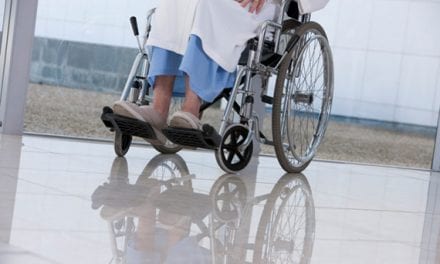By Steve Moran
If you want to do some interesting and perhaps a bit scary reading, do a Google search for the term “existential threats.” You will discover that an “existential threat” is something so dire that it could completely wipe out the thing being threatened, or if not wipe it out, completely alter and diminish what it once was.
Senior Living Wiped Out …
It seems like a preposterous idea. I have a hard time believing that it will completely disappear, but already we are seeing signs of great peril, when just two years ago the predominant thinking was that in 10 or 15 years the need will be so great that it will be impossible to build enough communities.
Even before COVID, the signs were there. Depending on how you look at the data, somewhere between 2% and 10% of the age- and income-qualified older people lived in senior living, and it is not the first choice for most people who are growing older.
7 Existential Threats to Senior Living
Here are seven existential threats to senior living, and each of them is something that could break the industry or, tackled artfully, make the industry stronger.
- Amazon, Google, and maybe Meta. They see the financial potential in the “boomer cohort.” They have massive financial and technical resources. They are less successful than they could be because their thought leaders are clueless about older people. They have completely misguided understandings of what older people need and want. A single example: They have not really figured out that the coveted older generation is using the same technology they are.
But if they figure it out. Watch out, baby. - A commitment to doing things the same way. I continue to be baffled by senior living organizations that suffer from low occupancy and don’t go into fire drill mode, saying, “We have to change, to do it differently — what we are doing is not working.”
- Letting the desire to control costs determine programing (and everything else). Several months ago a study came out that showed that MBAs are really great at reducing costs, but not very good at increasing revenues. The problem is that you can only cut so much, and it is a NO mentality.
- Slow technology adoption. Technology is obviously hear to stay, but there are still many many communities that have inadequate internet bandwidth. Robots have been proven to extend the efficiency of staff, and yet most communities don’t have even one.
- Staffing everything. Staffing is the #1 problem almost every single senior living community faces, except that there are a handful of communities and organizations where they have figured it out. It is fundamentally three things: Paying market wages, having team members feel like they are a part of something special, and asking every day what will give every team member a great day at work.
- Active 55 with services. We have no idea how big a threat this is. Margaritaville is able to sell their homes faster than they can build them. The Villages has two hundred thousand plus people living there, getting services at home there until the die. It allows more control over one’s life and at a lower cost.
- The rules. Rules in life are tricky things. On one hand they protect people’s rights and freedoms, and yet at some point they become tools to take away freedom. We have seen this happen with nursing homes already. The rules are designed to protect residents and keep operators honest. Yet what has really happened is that the rules have made it a lot harder to create programs that serve people and have added a tremendous cost burden to operators. Not really talked about is the emotional cost of having to worry about all those rules.
Every time I hear someone suggest we need federal regulation of assisted living in order to create consistency from state to state, I cringe. The costs will vastly outweigh the benefits.









https://www.seniorlivingforesight.net/7-existential-threats-to-senior-living/
About rule #7: if assisted living doesn’t want federal regulation, then they shouldn’t take money from the government. But ALs now want free money with no strings attached. This squelches innovation.
For example, ALs perseverate on offering the Big Box model, an antiquated model created by ROI driven investors and owners and operators who live in private luxury homes. How many of them actually live in the Big Box developments they create? So, on the one hand, only the rich can afford to live there, while on the other hand, they fund these monstrosities for the rich with federal subsidies! Meanwhile, those with modest financial means are still ignored (except by a few well-intentioned organizations).
Senior living is a very distasteful business…
The Rules, #7 is doubtless underrated… The Federal government has a huge stranglehold and you’re right, the nursing homes already paid that price. Now it seems they are gaining in popularity, especially where skyrocketing costs are tied to state or federal regulations and the smaller operators suffer first. What large corporate senior living doesn’t realize, is we stand or fall Together in the Assisted Living world…
What hurts mom & pop business, hurts mom & pop, who are currently the Silver Tsunami. We need to see this and work together especially where “board & care homes” or ALFs under 15 beds, are 75% of the licensed facilities, as in Florida.